Riding a motorcycle is fun, thrilling, and quite dangerous if you’re not wearing proper equipment that can vouch for your safety on the road. That feeling of freedom is only second best to the feeling of safety. While everyone likes the wind to go through their hair, riding a motorcycle without a helmet is considered very dangerous. Motorcycles are part of the traffic, but they can often time be overlooked by other vehicles and that can put you in a dangerous situation.
So because of that, we are going to talk about the equipment every rider should have that will guarantee his safety while on the road.
Contents
1. Motorcycle Helmet
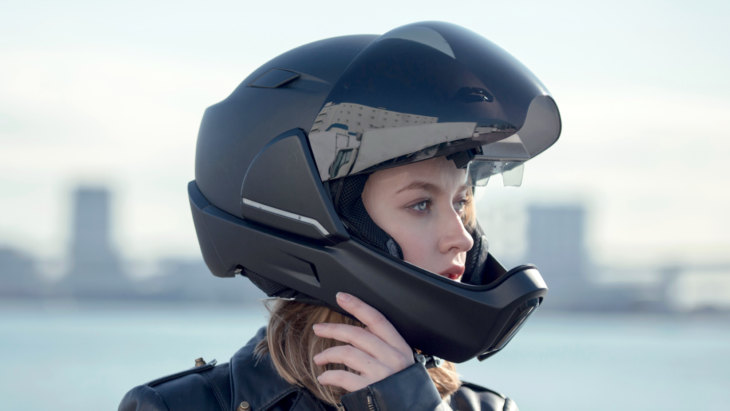
Source: Kickstarter
Probably the most important piece of equipment of them all, a helmet is what protects you from bashing your head if an accident occurs. Statistics are taken from the CDC, Centers for Disaster Control and Prevention, motorcyclists are far more likely to be involved in accidents than other vehicles, and motorcycle accidents are far more likely to result in fatality. If an accident does occur, almost 66% of all helmet impacts occur around the forehead or chin area. So with all that being said, a helmet is a rider’s best friend while on the road, and an important piece of equipment that can be the difference between life and death.
Because a helmet is such a necessary piece of safety gear when it comes to riding a motorcycle, it’s important to find the type that works best for you and your needs. There are three main styles of helmets: the ½ helmet, ¾ helmet, and full-face helmet.
The ½ helmet offers the least amount of coverage, only protecting the top of the rider’s head and part of the back and sides. Typically, riders will choose to wear goggles or protective glasses to help keep sunlight and debris out of their eyes.
The ¾ helmet provides complete coverage of the top, back, and sides of a rider’s head, but it offers little to no protection for their cheeks and jaw. A ¾ helmet will generally have a full or partial visor in order to protect the rider’s face from debris or weather.
The full-face helmet is the safest option, offering complete coverage of the rider’s head and face. Though they have the most protection possible, they can be relatively hot, particularly on a warm day. Because of this, most full-face helmets will have ventilation throughout to evaporate sweat, reduce fogginess in the visor and help keep the rider cool.
In a full-face helmet, it can be difficult to hear your fellow riders. Bluetooth speakers can be installed in order to create an intercom between you and those you’re riding with.
It’s a great idea to try on different styles and sizes in person so you can choose the perfect helmet for you. If your helmet fits properly, it shouldn’t rotate forward when pushed up from the back, nor should it move from side to side if pushed horizontally. Visit protectivegearz.com for more info on helmets and protective gear.
In the case you find yourself in a motorcycle accident, the people at baumgartherlawyers.com can advise you on taking the necessary measurements and evaluate your case.
More about motorcycle helmets guide, you can find on Spaulding Injury Law‘s infographic.
2. Motorcycle Jackets
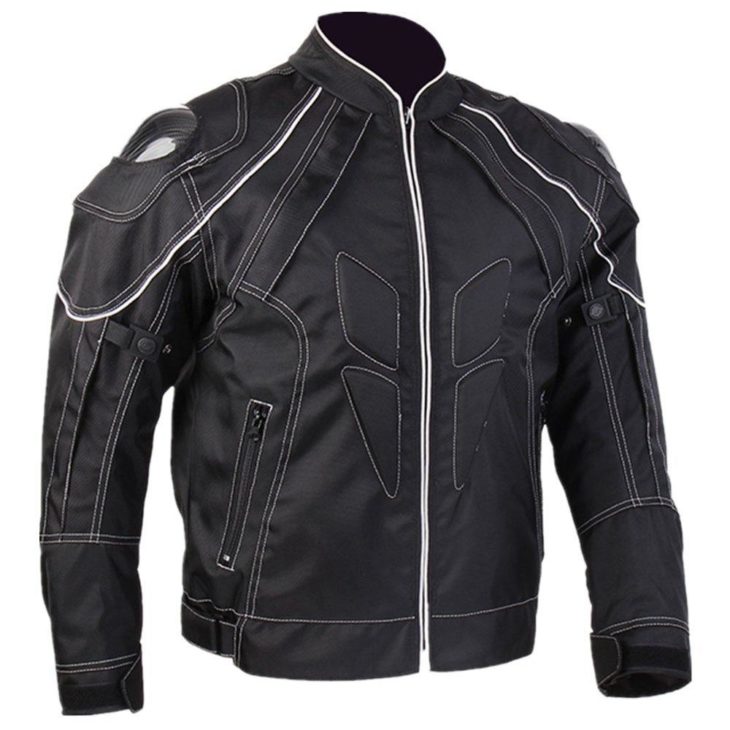
Source: ILMotor
Other very important pieces of equipment, only second in importance to a helmet, are motorcycle jackets and gloves. For riders, it’s important that you protect every area of your body while riding the freeway. Motorcycle jackets are high-quality and quite expensive pieces of equipment that can also prevent injuries in crashes. Not only that, but motorcycle jackets can protect you from the wind while riding. According to statistics, motorcyclists who wear protective jackets are far less likely to visit a hospital after a crash than those who don’t have any kind of motorcycle jackets on them.
3. Motorcycle Gloves
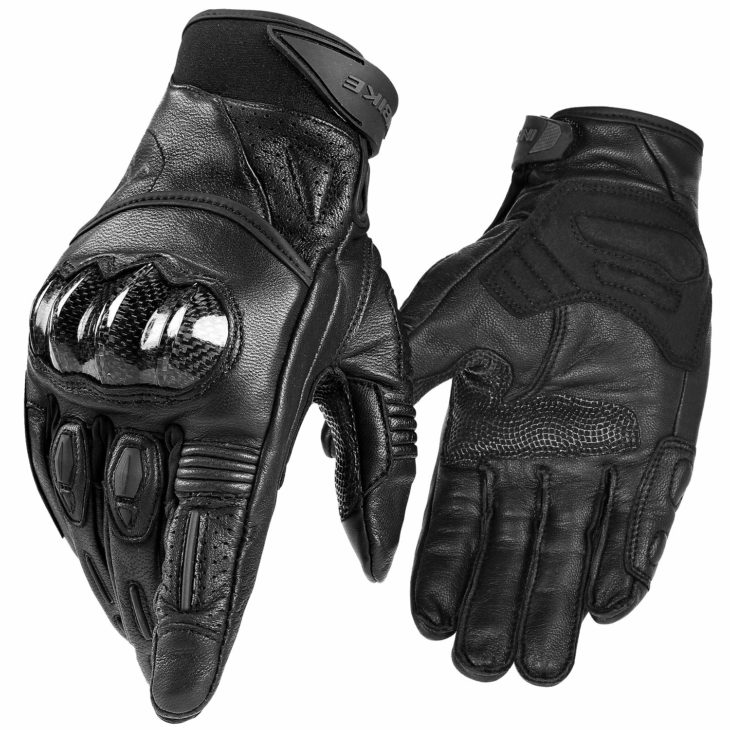
Source: Amazon
In the event of a crash, it’s likely that you would first put your hands out to help catch yourself. Because of this, gloves are an incredibly important piece of safety equipment to wear.
There are many options to choose from when it comes to style and material. Leather is always a great choice for protection, and many will offer additional padding in the knuckles, palm, and back of the hands. Keep in mind that you’ll need dexterity in your fingers to properly shift gears, brake, and speed up, so something lightweight but protective is in your best interest.
Gloves are very important for hand protection. They are not as expensive as jackets because there are plenty of options out there to buy on the cheap and still get value for your money. When buying motorcycle gloves, make sure they are comfortable, warm, water-resistant, wind-resistant, and make sure they allow you protection while also allowing you free land motion.
4. Motorcycle Boots
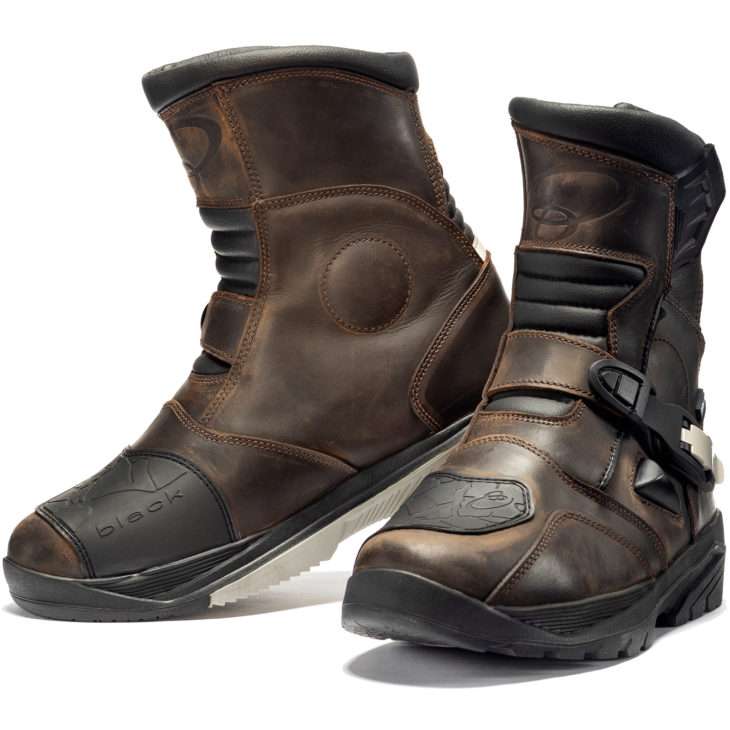
Source: eBay
Highly recommended, motorcycle boots are paramount for your safety and for allowing you to control while riding. The best thing about motorcycle boots is that they allow you to provide you proper foot and ankle support. They are also best for preventing injuries in crashes; protect you again hazards, and impacts. Statistics from the CDC have found that cyclists who wear motorcycle boots reduce the chances of foot injuries by 45% while on the road.
5. Pants or Knee Guards
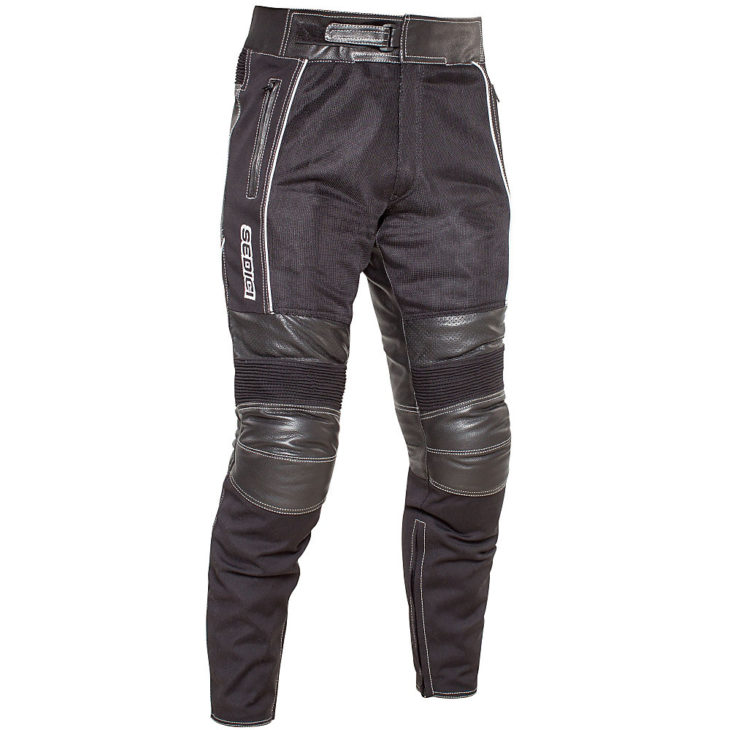
Source: Sedici
Motorcycle pants or knee guards are yet another important pieces of equipment that can be the difference in crashes. They are vital for any motorcyclist and they are a must-have for every rider. Pants or knee guards can offer a lot of protection in crashes, as they are designed to sustain impacts and protect the knees and legs of the cyclist. When buying motorcycle pants, always go for the ones that are waterproof, windproof, abrasion-resistant, and breathable.
A Final Note on Safety
It’s always better to be safe than sorry when it comes to protective riding gear. Motorcycle accidents are unfortunately some of the most severe on the road, so it’s imperative to do everything you can to protect yourself. Always remain alert while riding and be sure to gear up properly before every ride!
